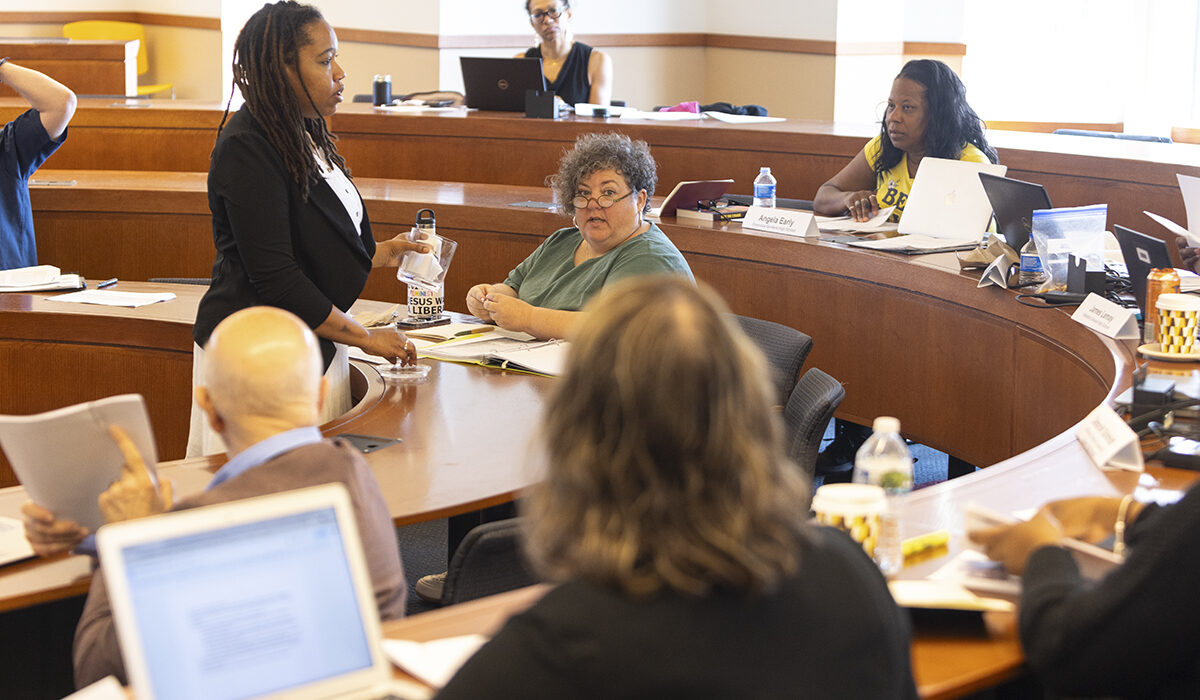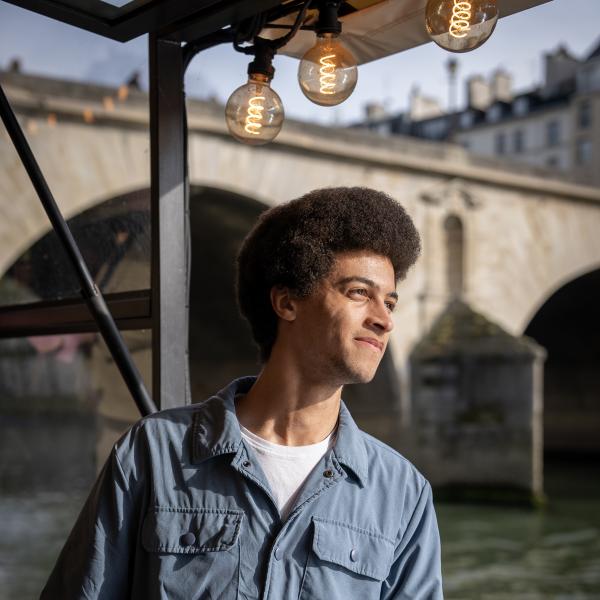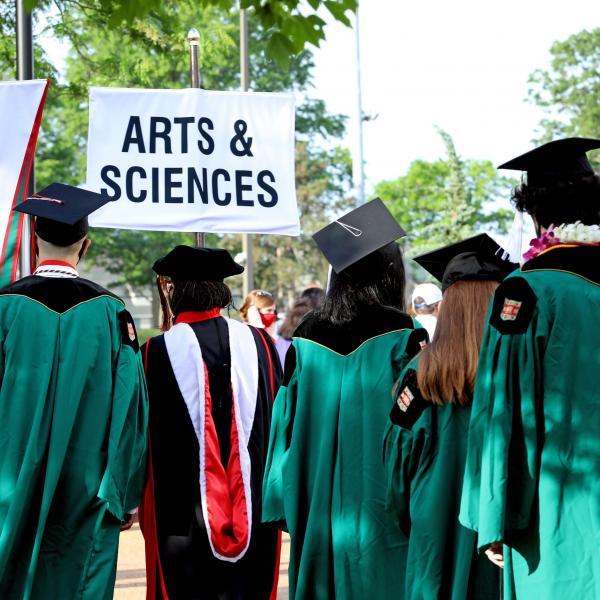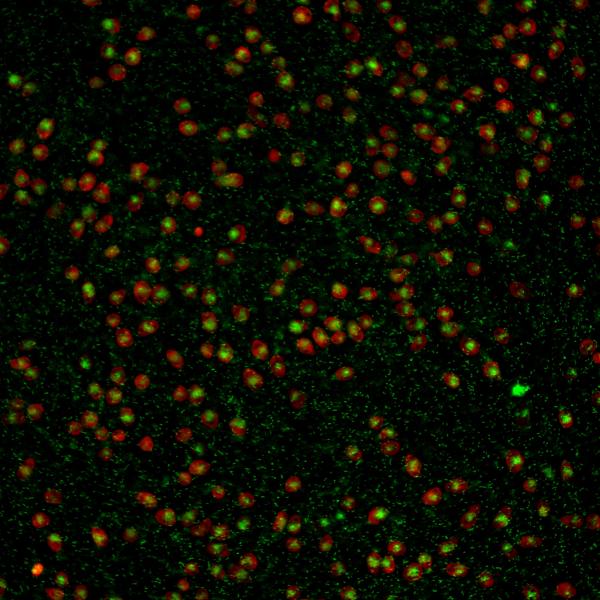
Josie Gilmore did not win elected office, lead an army or make a grand discovery. She was a Black mother who was shot and killed by her lover 130 years ago in St. Louis. But her story, captured in Missouri’s extensive Digital Heritage Archives, offers a glimpse of life in the city, the experience of Black women and the early proliferation of firearms.
“This is just one case among thousands that represents our local history,” Sowande’ Mustakeem, an associate professor of history and of African and African American studies in Arts & Sciences, recently told a group of high school teachers from across the region. “It’s important for students to ask: What do we know? Who do we remember? Why do we care?”
To Mustakeem, an expert in the roots of gun violence in the city, the answer is clear: the past often foretells the present. She was one of many Washington University in St. Louis faculty members who participated in the African American Studies Teachers Summer Institute, a free one-week seminar designed to connect high school teachers from the region’s public, private and charter schools to experts and resources in local Black history and culture.
In addition to Mustakeem’s presentation about medicine and crime in St. Louis, participants learned about Black music, explored University Libraries collections, read narratives written by enslaved people from Missouri and took field trips to the St. Louis Blues Museum and Greenwood Cemetery, the oldest Black cemetery in the region.
Shanti Parikh, chair and professor of African and African American studies and a professor of anthropology in Arts & Sciences, organized the institute with Gerald Early, the Merle Kling Professor of Modern Letters in Arts & Sciences. She said learners are naturally curious about the places they call home.

“For high school students, this place is at once familiar and unfamiliar,” Parikh said. “Students know what they see today — the streets, the storefronts, the playgrounds. But they don’t always know the layered history of these places and how they connect to broader themes and topics. By introducing students to primary sources such as a score or a photograph, we are showing what it means to be a scholar — to learn how to analyze primary data and understand its context.”
Veteran educator Deborah Schmidt said she plans to introduce her students to more primary sources such as the Documenting the American South Collection, which holds the slave narratives of St. Louisans William Wells Brown and Lucy Delany, and Washington University’s Henry Hampton Collection, which features extended interviews with civil rights leaders.
“Oftentimes history is just facts, dates and places,” said Schmidt, who currently teaches courses in American history and law at McKinley Classical Leadership Academy in St. Louis Public Schools. “But primary sources reveal to us the full complexity of the people who make human history. They are a great way to rehumanize history and help students see themselves in the past.”
Originally published in The Source.



